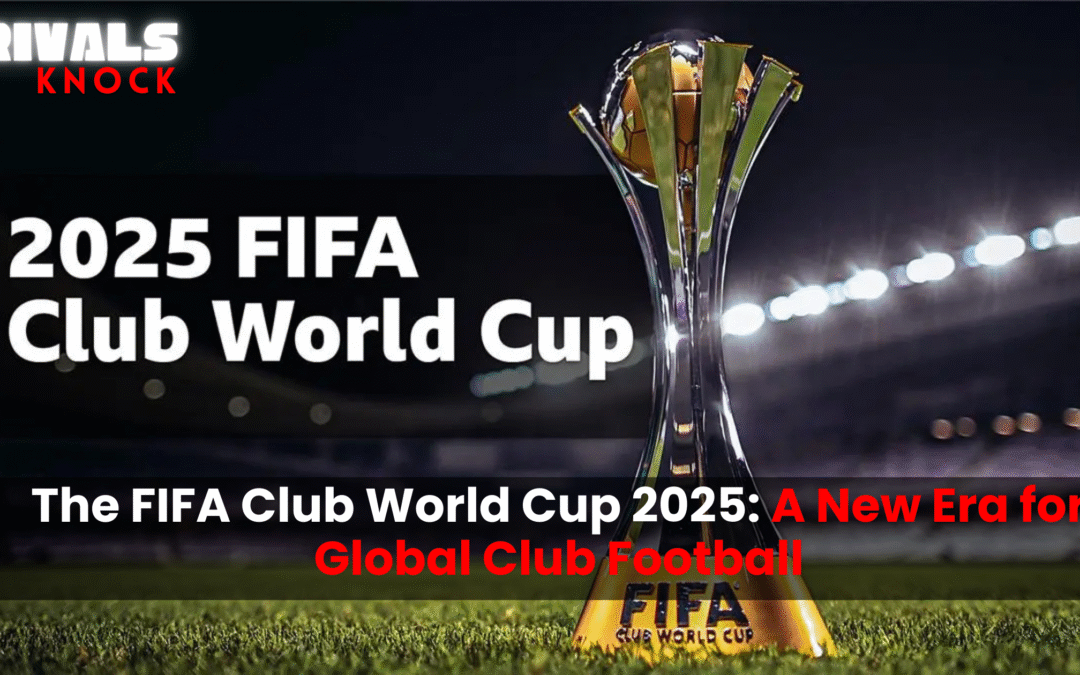The FIFA Club World Cup 2025 is set to kick off next month, and with a brand-new 32-team format, it’s shaping up to be the biggest club competition yet. Hosted in the United States from June 15 to July 13, the tournament promises a month of high-stakes football as the world’s best clubs battle to be crowned global champions. From its humble origins to this expanded spectacle, let’s dive into the history, format, and what to expect from this exciting new chapter in club football.
From Intercontinental Roots to a Global Stage
The concept of a global club competition dates back to the 1950s, when South America’s Copa Libertadores (launched in 1960) and Europe’s European Cup (now UEFA Champions League) sparked interest in inter-confederation showdowns. From 1960 to 2000, the Intercontinental Cup pitted the European Cup winner against the Copa Libertadores champion in a single match, crowning a world champion. In 2000, FIFA introduced the Club World Cup, expanding to include teams from all confederations. The original format featured seven teams: six confederation champions and a host nation representative (the previous season’s league winner). UEFA and CONMEBOL champions entered at the semifinals, needing just two wins to claim the title. Real Madrid won the inaugural edition, but the tournament paused until 2005, when it became an annual event with the same structure—until now.
A Bigger, Bolder Format for 2025
FIFA’s new vision is to create a tournament that surpasses even the Champions League in scale and prestige. The 2025 Club World Cup expands to 32 teams, mirroring the FIFA World Cup structure: eight groups of four teams, followed by a round of 16, quarterfinals, semifinals, and a final. Unlike the old format, where top teams played just two matches, this extended competition ensures a true test of consistency and quality. FIFA aims to crown the “best club in the world” through a rigorous process, not a fluke two-game run. Plus, with each team receiving €50 million just for participating, the stakes are high both on and off the pitch.
How the 32 Teams Qualified
Teams were selected based on a mix of recent continental success and coefficient rankings over the past four years. Here’s the breakdown of slots by confederation:
-
UEFA (Europe): 12 slots—Champions League winners (Chelsea 2021, Real Madrid 2022 & 2024, Manchester City 2023) and top-ranked teams (Bayern Munich, PSG, Inter Milan, Porto, Benfica, Dortmund, Juventus, Atlético Madrid, Red Bull Salzburg).
-
CONMEBOL (South America): 6 slots—Copa Libertadores winners (Palmeiras, Flamengo, Fluminense, Botafogo) and highest-ranked clubs (River Plate, Boca Juniors).
-
AFC (Asia): 4 slots—Champions League winners (Al Hilal, Urawa Red Diamonds, Al Ain) and top-ranked team (Ulsan).
-
CAF (Africa): 4 slots—Champions League winners (Al Ahly, Wydad, ES Tunis) and top-ranked team (Sundowns).
-
CONCACAF (North America): 4 slots—Champions Cup winners (Monterrey, Seattle Sounders, León, Pachuca).
-
OFC (Oceania): 1 slot—Auckland City.
-
Host Nation (USA): 1 slot—Inter Miami, 2024 MLS Supporters’ Shield winners.
This selection process rewards consistent performance, ensuring that only the best clubs—either through titles or sustained excellence—make the cut.
The Group Stage Draw: Who’s Facing Who?
The draw, conducted with a new trophy unveiling, followed strict rules to avoid same-confederation matchups (except for UEFA, with 12 teams). Here are the groups:
-
Group A: Palmeiras, Porto, Al Hilal, Inter Miami
-
Group B: PSG, Atlético Madrid, Botafogo, Seattle Sounders
-
Group C: Bayern Munich, Auckland City, Boca Juniors, Benfica
-
Group D: Flamengo, ES Tunis, Chelsea, León
-
Group E: River Plate, Urawa Red Diamonds, Monterrey, Inter Milan
-
Group F: Fluminense, Dortmund, Ulsan, Al Ain
-
Group G: Juventus, Wydad, Manchester City, Sundowns
-
Group H: Real Madrid, Al Hilal, Pachuca, Red Bull Salzburg
The draw was structured by rankings:
UEFA teams ranked 1st to 4th (like Real Madrid) were paired with lower-ranked UEFA teams (like Salzburg), while UEFA teams ranked 5th to 8th (like Chelsea) faced CONMEBOL teams ranked 2nd to 4th (like Flamengo). The knockout pathway is pre-set: Group A winner faces Group B runner-up, Group C winner vs. Group D runner-up, and so on.
Why This Matters: A True Global Test
Unlike the old format, where a Champions League winner could win the title in just two matches, the new Club World Cup demands consistency across group and knockout stages. South American teams, known for their knockout prowess, now have six representatives, making them a serious threat. Asian and African teams get more exposure, adding a global flavor to the competition. Held every four years, the tournament’s value will grow over time, much like the Champions League did after its own format changes. It’s also a strategic move by FIFA—hosting in the USA prepares the region for the 2026 World Cup, while the 2029 edition in Spain, Portugal, and Morocco aligns with the 2030 World Cup.
What to Watch For
Expect upsets and intense battles. South American sides like Flamengo and Boca Juniors could challenge European giants like Real Madrid and Bayern Munich. Inter Miami, led by Lionel Messi, will face a tough test in Group A against Palmeiras and Al Hilal. The expanded format means more opportunities for underdogs like Auckland City or Seattle Sounders to make a mark. With a month-long schedule, squad depth will be crucial—top teams will need to rotate wisely to avoid fatigue.
Who do you think will lift the trophy? Will a European powerhouse dominate, or can a South American or Asian team pull off a shock? Share your predictions on X with #ClubWorldCup2025, and let’s get the conversation going! Stay tuned to Rivals Knock for more updates as the tournament approaches

